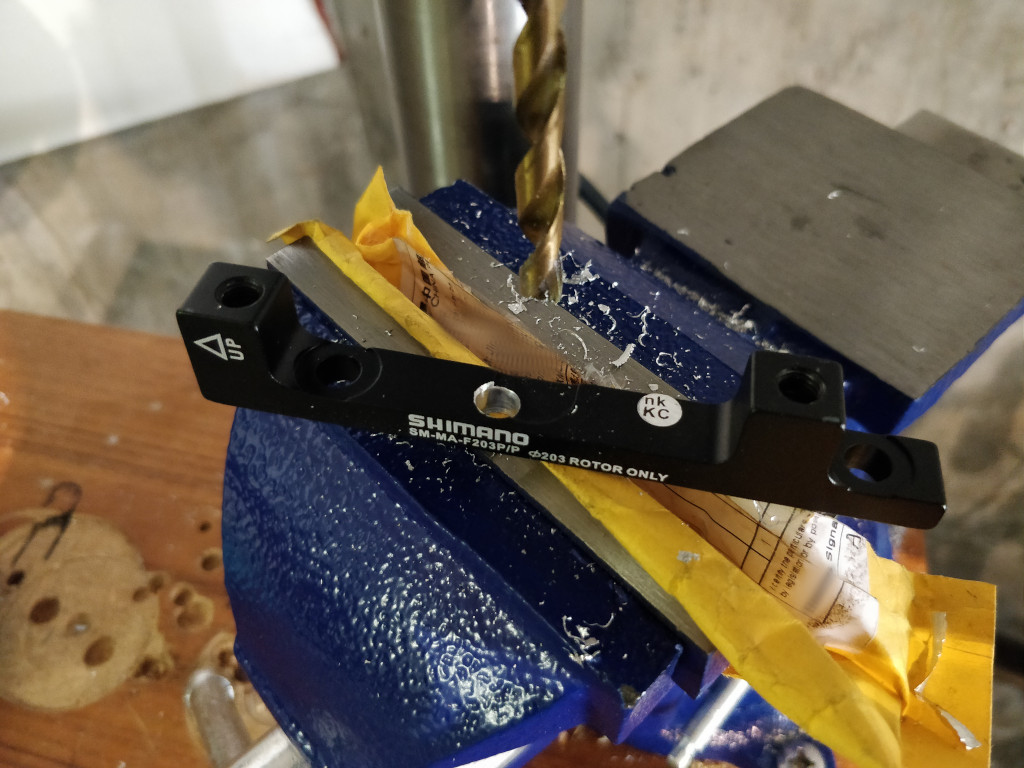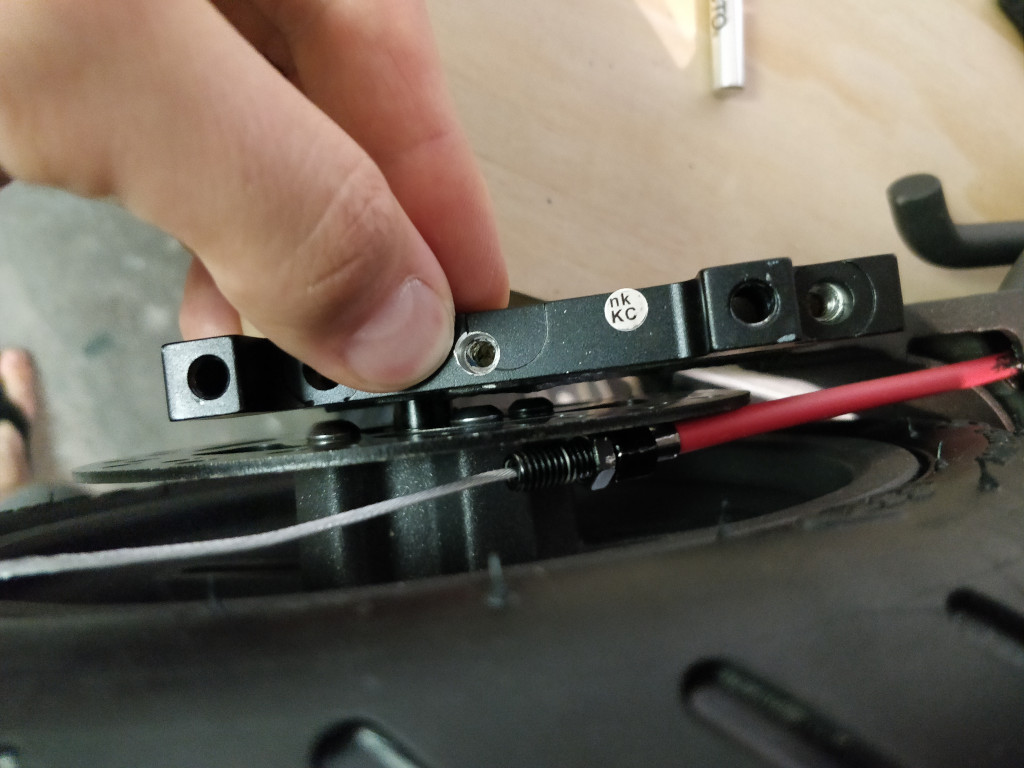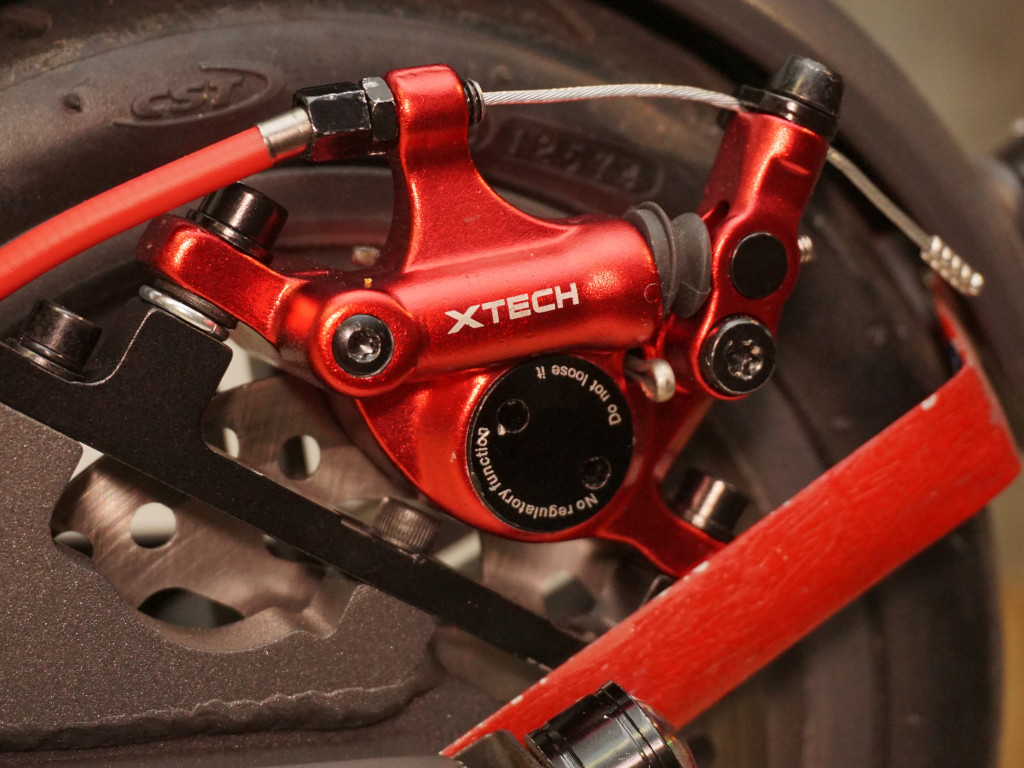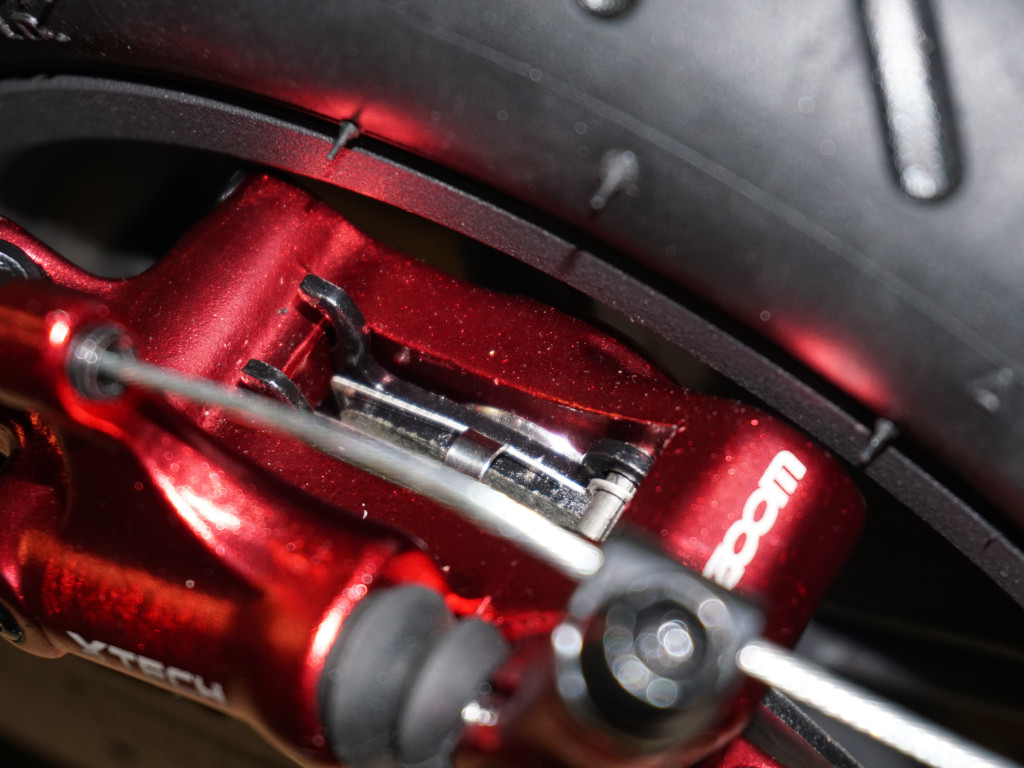Updrading the Xiaomi M365 Brakes with Hydraulic Calipers
Despite many attempts, I have never successfully gotten the rear disc brake on my M365 to bite early enough. I got it close a few times. But even so, your calibration is barely even good for a week before requiring it again.
This mod takes care of that and allows for much earlier grip in the brake lever's travel to the point of locking up. This is because both brake pads move rather than just one against a fixed pad. On an M365 classic, upgrading the rotor from 110mm to 120mm means the contact area of the pads is also larger. We'll need to customize a mounting bracket, so this modification isn't easy, but it sure isn't terribly hard either.
These three main components are:
- Hydraulic Calipers, either rear or front, we aren't using the bundled bracket
- Braket/Mount/Adapter, 203mm / the straight one (backup 1) (backup 2)
- 120mm rotor (if you don't have it already)
You'll also need some hardware:
- 2x M5 or M6 Washers
- M5 bolt with a small head (button head ideally)
Start by freeing the rear wheel, swapping in the new rotor, and understanding how it all comes together. There's a pin that sits loosely through the caliper assembly which holds the brake pads in place. Remove it and lift the pads out of the top with needle nose pliers.
The bracket has two threaded offsets for the caliper assembly. The other two non-threaded holes would be for a bike's bolts, but we'll only be using one of them. It's the one on the outward piece of the bracket. It points toward the front of the scooter and should hold the higher up brake bolt. Place the bracket as such and hold all components in place. With the calipers on and the new rotor in place, a few tweaks become apparent.
 |
 |
The bracket has no hole for the lower bolt— this is where to drill. Eyeball and mark it for alignment, trying to center it as much as possible.
Prepare to test mount it. For correct positioning, you'll need to offset the unit with washers. You can use the original bolt in the upper mount, but because the stock ones have a fixed washer that makes it stick out more, you need that custom bolt to fit below the assembly. Use the washers in the connections between the calipers and the Shimano bracket (see photo).
Verify the custom bolt is long enough. There's a lot of pressure on this part so you'll need to tighten it well.
Make sure the assembly sits as low as possible without rubbing. If it's too high, you may find it eventually come into contact with the rear wheel and grind off some paint. It was just 2 washers on the upper bolt to make it sit correctly for me.
 |
 |
The fit is really tight. The caliper assembly just barely clears the rim, and I found it requires taking out the pads to put on or take off. To do that, you'll put in / pull out the pin with everything assembled. I bent my pin slightly at the end so that it was possible to install with the assistance of a small flathead screwdriver, yet still held in place well enough afterward. I don't think this is concerning as everything does come together, it only requires some extra steps.
I also had to gently pull through a little more brake cable to reach the new position of the clamp.
 |
 |
The wheel's axis bolts do affect rotor alignment. Before lining up the calipers, make sure to fasten the wheel.
Don't be too concerned about the pads initially hugging the rotor too much. After the first couple of rides, the slight rubbing subsided.
That should be it. And a word of caution— it is now easy to lock up your rear wheel and lose control. The feel of your brake will take some getting used to. You also may want to play with the motor brake parameters via custom firmware.